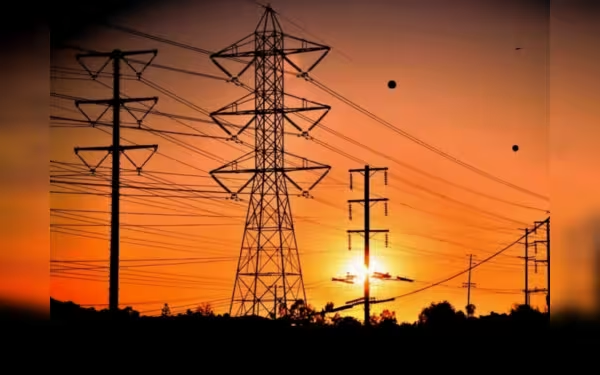Saturday, November 23, 2024 08:23 AM
Pakistan Power Generation Surges Amid Rising Costs
- Power generation increased by over 7% year-on-year.
- Electricity generation costs rose by 10% in October.
- Shift towards solar energy impacts national grid.
 Image Credits: brecorder
Image Credits: brecorderPakistan's power generation rose 7% in October, but costs surged 10%, raising concerns over energy consumption and economic activity.
In October 2024, Pakistan's power generation reached 10,262 GWh, which is equivalent to 13,793 MW. This marks an increase of over 7% compared to the same month last year. However, when looking at the month-to-month figures, there was a significant decline of 17.8% from September's generation of 12,487 GWh (17,343 MW). Over the first four months of the fiscal year 2025, which runs from July to October, the total power generation fell by 5% year-on-year, totaling 50,808 GWh compared to 53,709 GWh during the same period last year.
Analysts are expressing concerns regarding the drop in electricity consumption in Pakistan. This decline is largely attributed to sluggish economic activity and soaring energy costs. Additionally, there is a noticeable shift towards alternative energy sources, particularly solar power, which is gaining traction among both residential and commercial sectors. This trend poses challenges for decision-makers as they navigate the implications for the national grid and the overall energy sector.
Interestingly, actual power generation exceeded the reference generation by 0.7% for the first time in 13 months, as reported by Arif Habib Limited. The generation cost was recorded at Rs1.02 per KWh lower than the actual cost of Rs9.26 per KWh, which includes transmission losses, leading to a negative Fuel Cost Adjustment (FCA).
On the flip side, the total cost of generating electricity in Pakistan saw a significant increase of 10%, reaching Rs9.06 per KWh in October 2024, compared to Rs8.26 per KWh during the same month last year. This rise in cost is primarily due to the increased expenses associated with power generation from imported coal, which surged to Rs16.91 per KWh, reflecting a gain of over 27% from Rs13.27 per KWh in the same period last year.
Experts have pointed out that the rise in fuel costs is linked to a decrease in production from nuclear power, which is a cheaper energy source. Nuclear generation fell by 21% year-on-year, while the reliance on costly imported coal increased, with its generation skyrocketing by 169% year-on-year.
In terms of the generation mix, hydel power emerged as the leading source of electricity in October, accounting for 31.1% of the total generation. This was followed by Regasified Liquefied Natural Gas (RLNG), which contributed 19.5%, and local coal, which made up 14.8% of the power generation share. Among renewable sources, wind, solar, and bagasse contributed 1.9%, 1%, and 0.5%, respectively.
As Pakistan continues to navigate its energy landscape, the increasing costs and shifts towards alternative energy sources present both challenges and opportunities. The government and energy sector stakeholders must work collaboratively to ensure a balanced approach that meets the growing energy demands while also considering economic viability and sustainability. The future of Pakistan's energy sector will depend on how effectively these challenges are addressed, paving the way for a more resilient and diversified energy portfolio.













